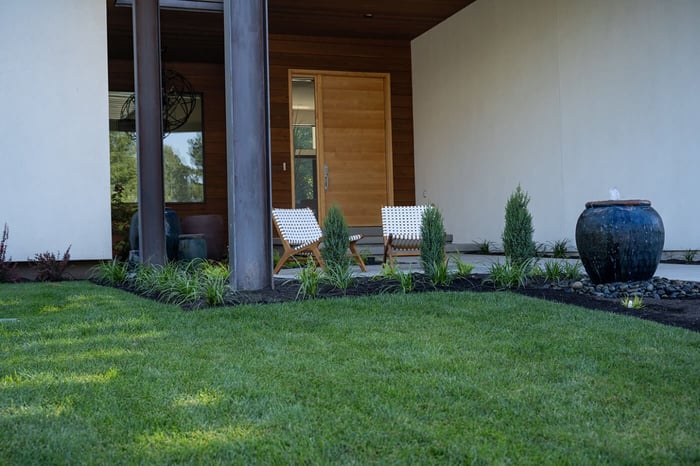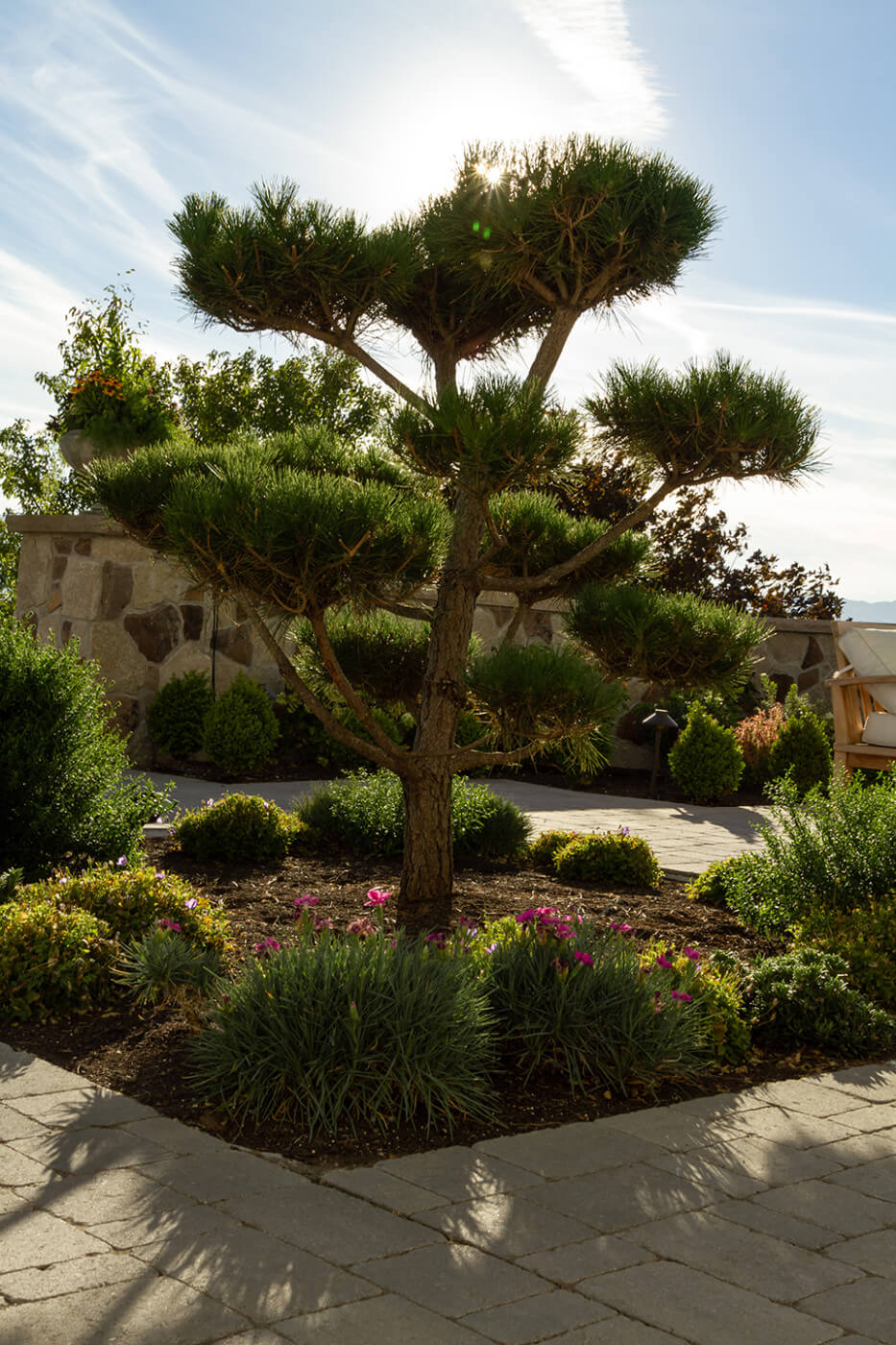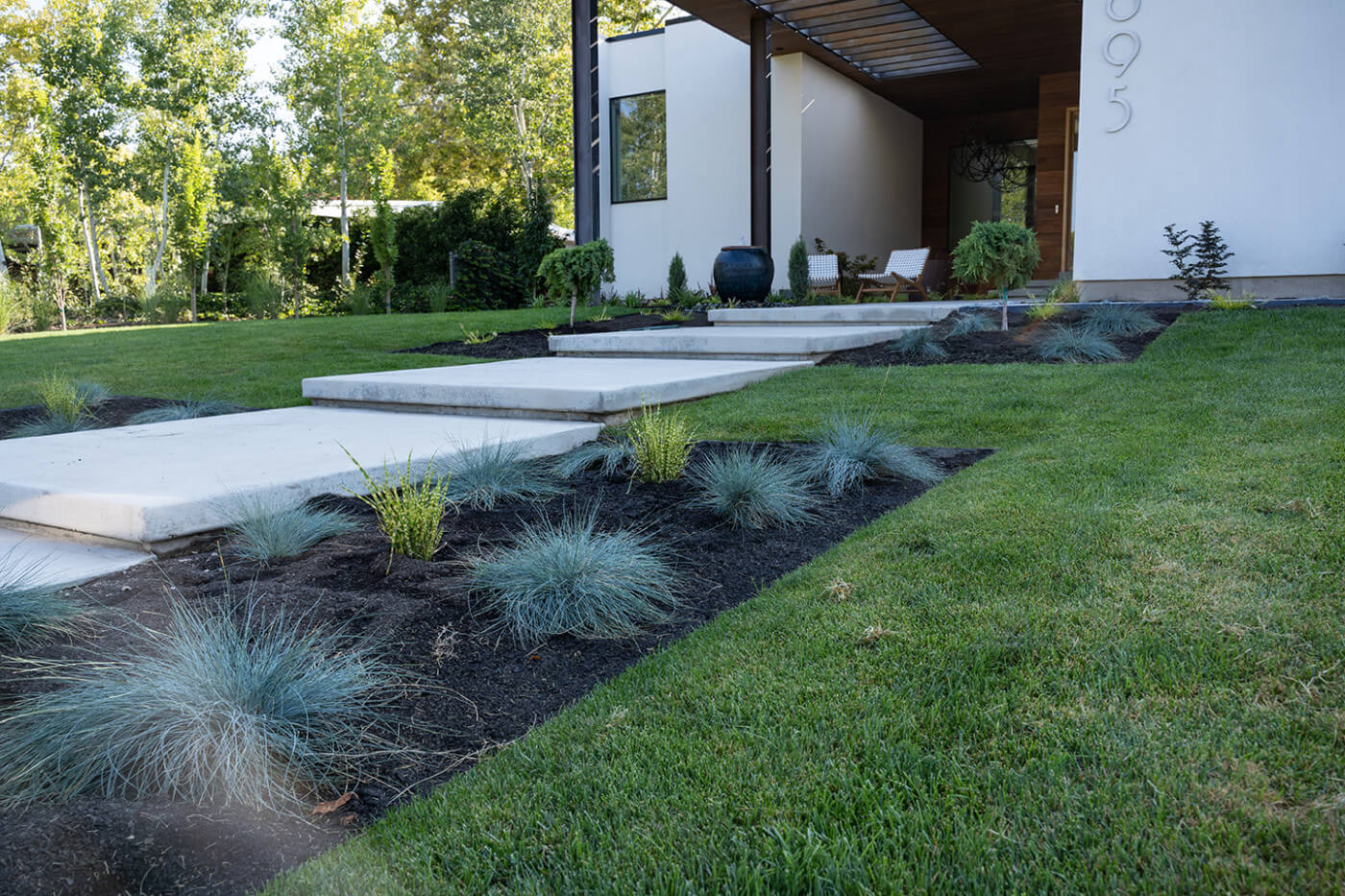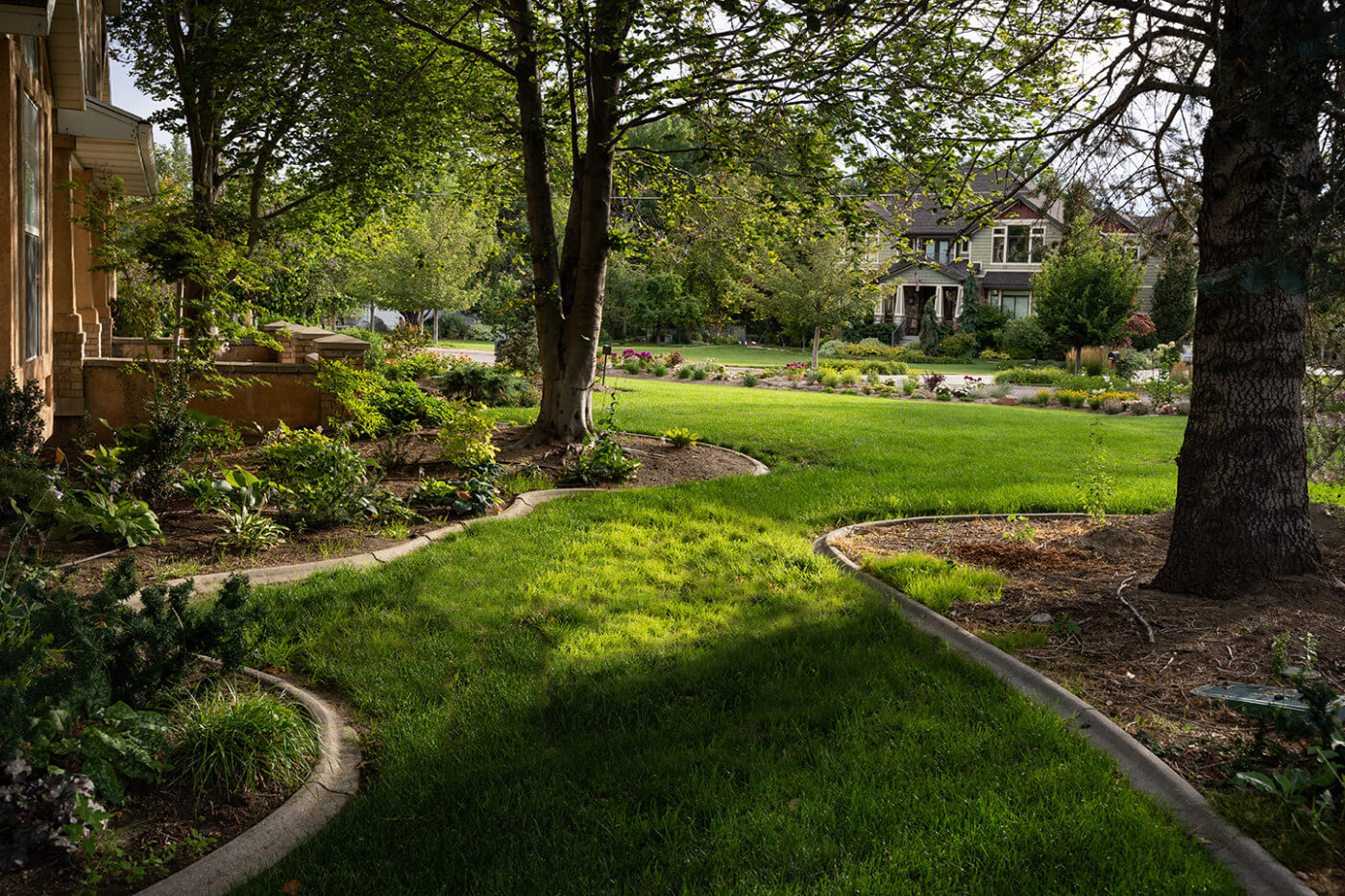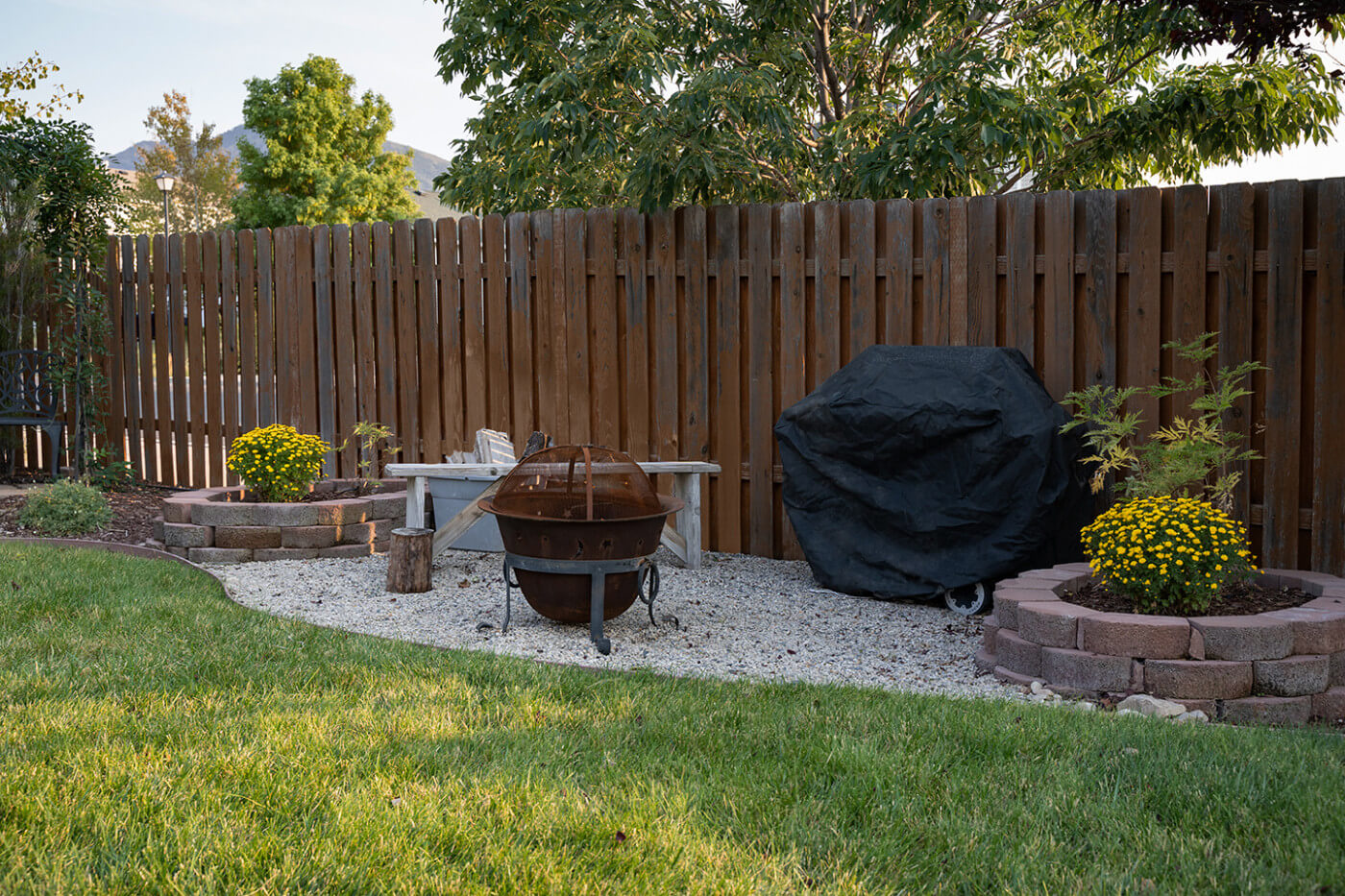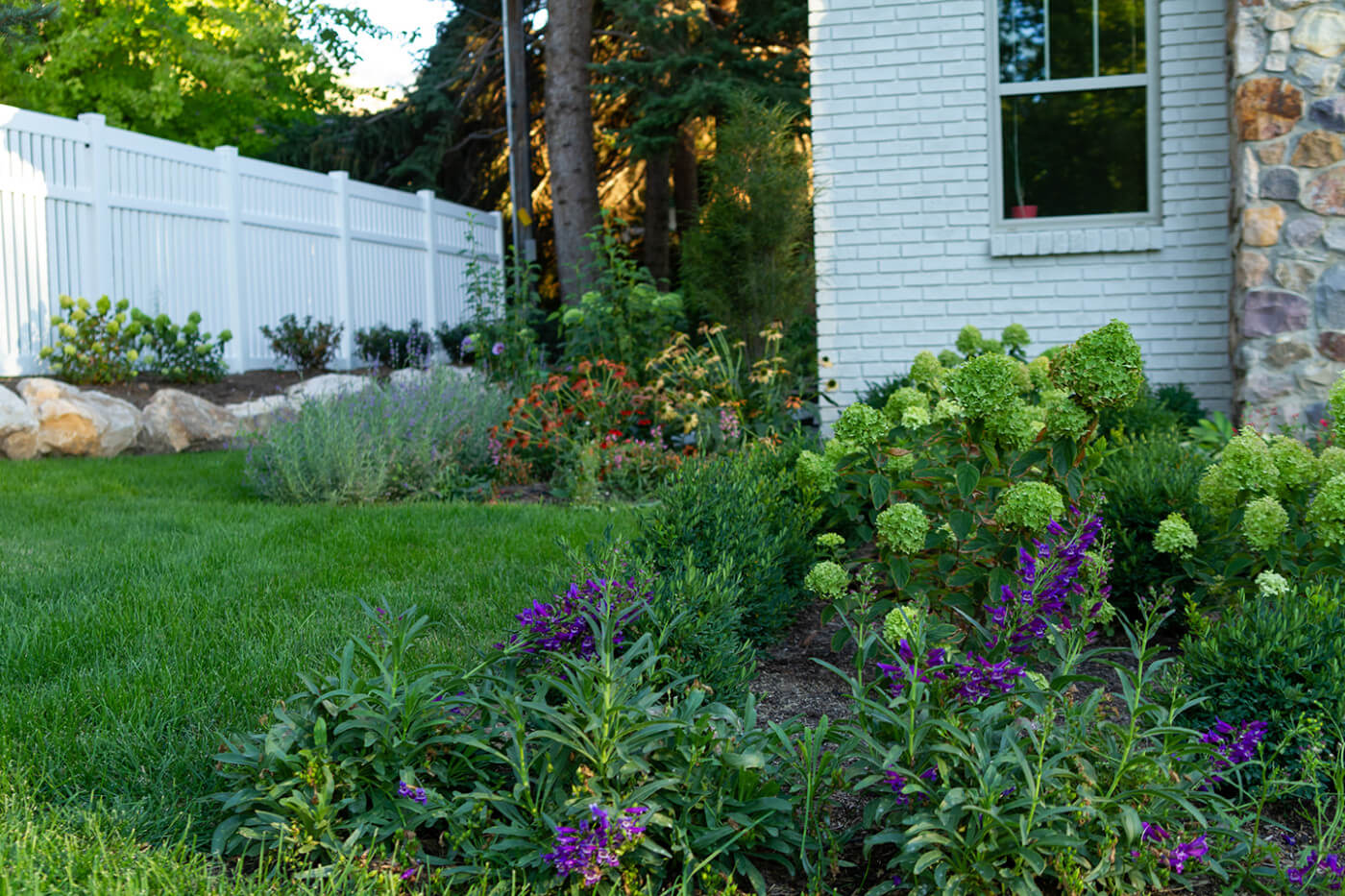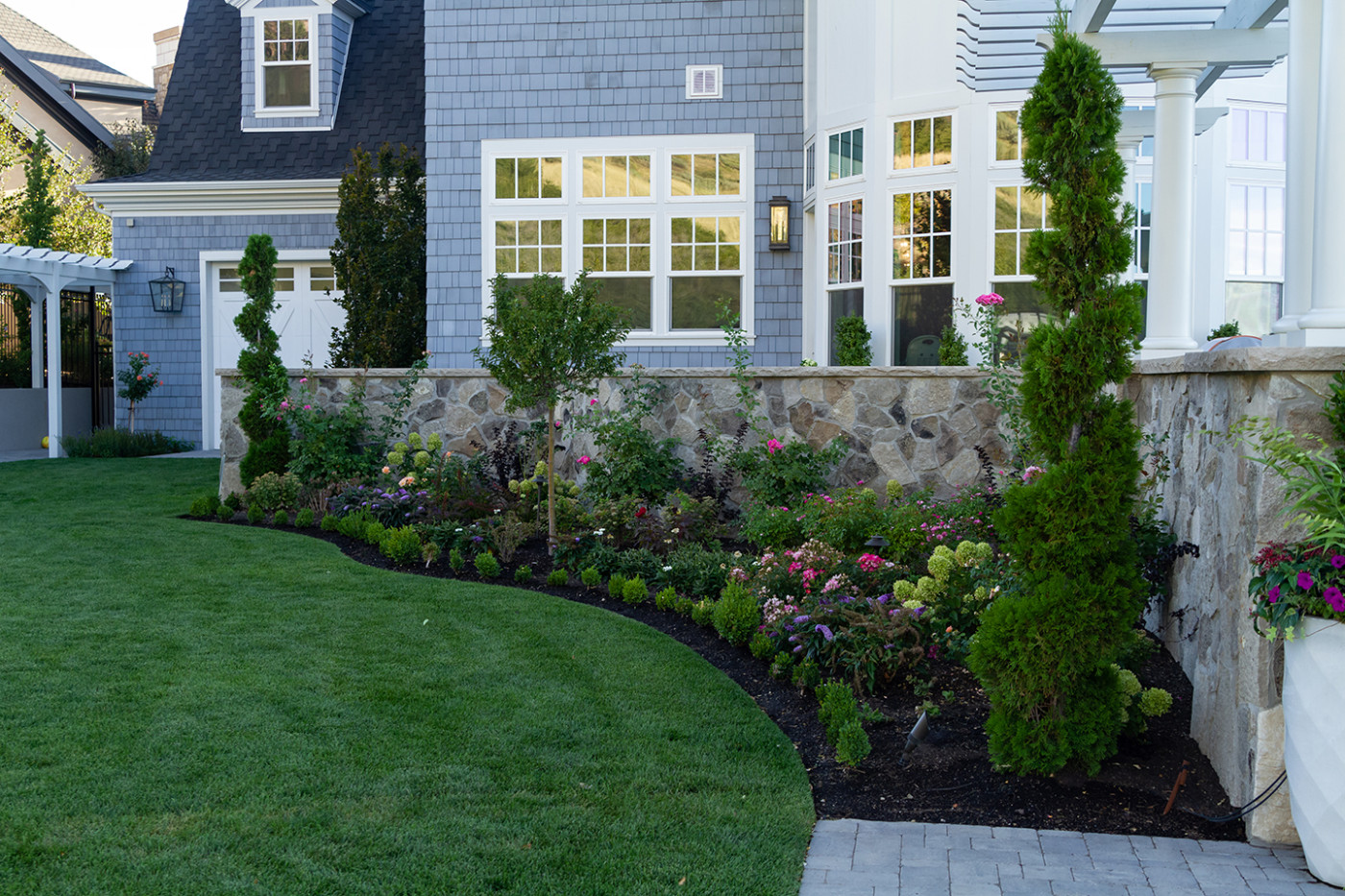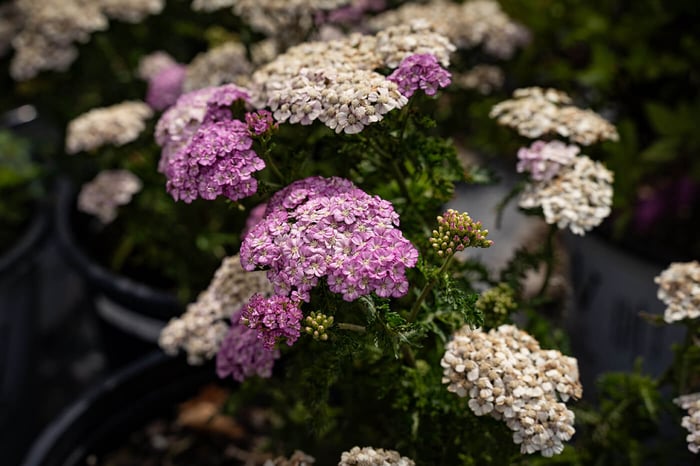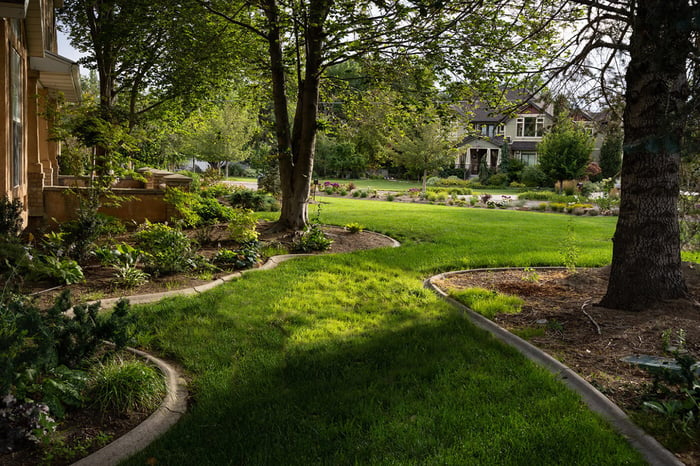As we talk with clients every day, we hear a similar story. They like their yard but don’t yet love it. Some elements are great! Perhaps they have a favorite tree, a special planter bed, or a nice play area for their kids, but the rest is just uninspiring. All of us hope to transform our outdoor space into something unique. We want it to be more than just visually beautiful—we want to design a magical place where memories are made.
The best landscapes are created to interact with us and the world around us. With a little knowledge of design and space, we can create a one-of-a-kind outdoor experience, not just a nice yard. To do this, it helps to understand a few basics. All designs are composed of the same basic elements, whether you’re shooting a photo, painting a mural, decorating a room, or creating the perfect landscape. These elements include mass, form, line, texture, and color.
The basic three structural elements are mass, form, and line. Color and texture will add richness, contrast, and intrigue to your landscape, but you first need to establish the framework. Using mass, form, and line, you can organize your space, provide structure, create flow, and establish the overall look, feel, and mood of your yard.
Mass
In design, mass refers to the visual size of an object or group of objects. We often refer to this as visual weight. Your goal is to balance the mass in your landscape. A grounded layout tends to hold our attention and create a sense of completeness. If you imagine that your outdoor space is on an old-fashioned scale, or balance, you can determine if one area feels too heavy compared to another area. (Remember that open space still has mass and visual weight. You don’t always need to balance an object in a landscape with another object. Open space will provide visual weight to counter the weight of hardscapes, trees, and gardens.)
Form
Form refers to the shapes of objects in a design. Your landscape will have several shapes. Your home may be rectangular, a shed may be square, walkways and driveways will have their own shape. Plants have their individual forms depending on their growth habit—pyramidal, rounded, vase-like, spreading, or irregular. When plants are placed into groups, the group takes on a new form altogether.
Line
We use lines in design to direct the eye. Leading lines carry your eye through the image or garden to the focal point. Lines create a sense of physical flow and connectivity. Vertical lines carry your vision toward the sky and bring a sense of expanse to your landscape. They’re a great way to make small spaces feel larger. Horizontal lines tend to make things appear wider. If used correctly, they can make a small area feel more broad and open.
Lines can also prompt feelings and even behaviors: straight lines are formal and direct, while curved lines are more gentle, playful, and natural. Think of the way lines speak to you when you’re shaping your beds and walkways, or choosing hardscape elements such as fences. Imagine how a straight or curved line might lead you, visually, through the landscape.
Empty or Open Space
As we mentioned earlier, open spaces, sometimes called “voids” also hold visual weight. We call them open areas and yet they tend to enclose their own space and hold a specific form in the landscape. It’s often within open spaces that you do most of your recreating, wandering, and relaxing. All too often these spaces consist of the space left over after your design is finished, but we would encourage you to design these open areas first and design your planter beds around them to set them apart and create intrigue within your landscape.
Localscaping
If you haven’t yet heard of localscaping, here’s a quick introduction. Localscaping is all about designing your open areas first. The idea is to design a central open space for your lawn that is easy for your sprinkler system to water and then surround that space with visually inspiring gardens filled with trees, shrubs and perennial plants. These plants will help shade your lawn in the summer so you use less water to keep it green. They also create a wonderful backdrop for your outdoor activities. This layout engulfs you in natural beauty and can provide privacy as you enjoy your outdoor space.
Localscaping also encourages you to create your play areas, gathering areas, and recreational areas and to surround these sections of your yard with planting beds as well. Setting aside areas for specific purposes will help make the most of your outdoor space and encourage you to spend more time in your yard.
All of these elements can combine to produce an outstanding yard that will draw you and your family outside to connect with the outdoors. With just a little planning, you truly can create a magical outdoor escape where you can interact with family and friends surrounded by the beauty of nature.
We can’t emphasize the importance of being outdoors enough. Simply being outdoors in beautiful places will improve your physical and mental health. Being in nature among the trees, plants, and wildlife helps increase your clarity as you reflect and focus on the things that matter most to you.
If you would like some help creating your outdoor getaway, just connect with us. You can call, text, email, or chat with us online. Plus, we have several outstanding landscape designers who would be happy to walk through your property with you and help you design the yard of your dreams.

